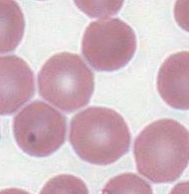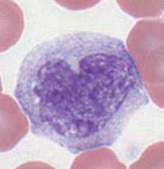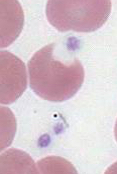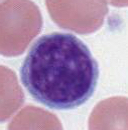Blood
The study of normal and pathologic blood development is based on the examination of stained smears of peripheral blood and bone marrow and sections or smears of lymphoid tissue of the thymus, spleen, lymph nodes and lymphoid infiltrations and aggregates along the G.I. tract. During this lab, become familiar with the morphology of mature peripheral blood cells and study the stages of blood development.
The cellular or formed elements of peripheral blood are classified according to the details of their appearance following staining with polychromic stains, e.g. Wright's stain. Four groups or classes of cells or cell fragments are usually present in peripheral blood:
- Erythrocytes (red blood cells).
- Granular leukocytes: neutrophils, eosinophils, and basophils
- Agranular leukocytes: monocytes and lymphocytes
- Platelets
#12 Blood smear, Wright's stain
To study the cell types in your preparations first scan the smear at low power and select a region where the red cells do not overlie one another and where they are stained pink. After finding an area that is well smeared and well stained, use the highest magnification to examine the blood cells, particularly the leukocytes. Identify neutrophils, lymphocytes, eosinophils, and monocytes. This slide does not have basophils as they account for less than one percent of the total number of leukocytes. Platelets will also be found. Use the chart and images in the lab manual to assist in identifying these different cell types.






